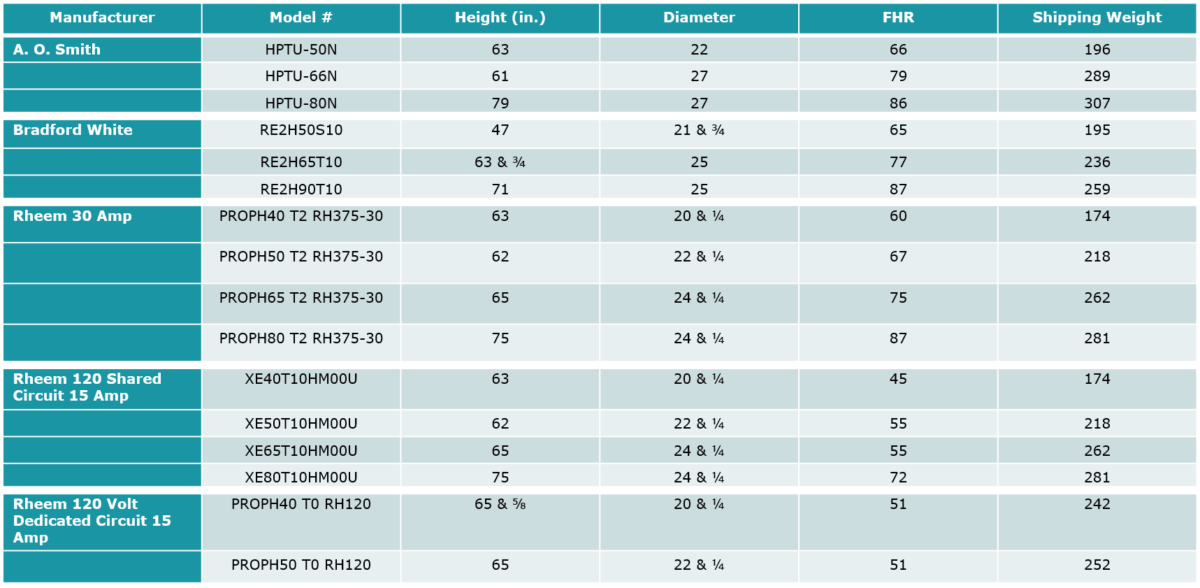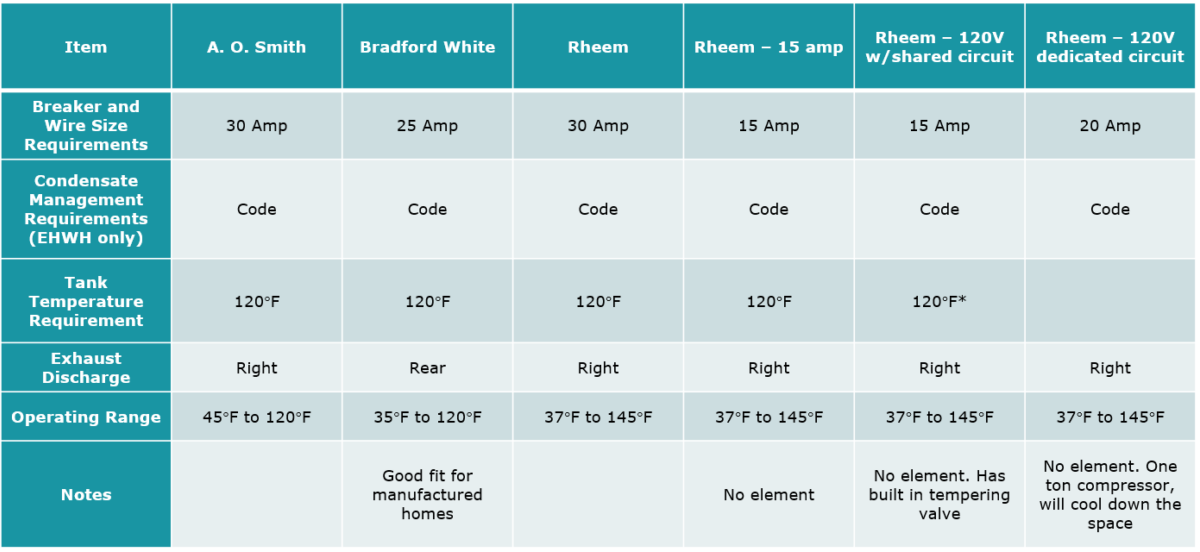Selecting the right Heat Pump Water Heater (HPWH) tank for a particular installation doesn’t have to be complicated; we have put together a simple and convenient resource you can use to choose the appropriate HPWH tank to meet a customer’s household needs.
The following article provides information on brand-specific features like clearance and breaker requirements, ducting requirements, and tank volume and sizing recommendations. Simplify the selection experience and consider referencing this resource next time you are assisting a customer with replacing their water heater.
Choosing the appropriate size HPWH tank depends on the size of the household, hot water demand requirements, and installation location. Make sure the water heater can handle the households hot water usage by considering the number of bedrooms and bathrooms in the house — plumbing codes categorize the tank by the first-hour rating, which is specific to the size of the tank based on the number of bedrooms and bathrooms in a household.
HPWH tank sizes typically range from 40 to 80 gallons. The figure below shows appropriate sizing for a household:

To maximize efficiency, size UP. To ensure maximum energy savings, choose the next tank size up. Bigger HPWHs can be more efficient in the long run, since they are less likely to rely on backup electric resistance heating and will ensure the household has plenty of hot water for all occasions, resulting in more energy savings for the customer.
Compared with standard electric tanks, HPWHs typically have higher first-hour ratings.
The functionality of the heat pump in addition to electric elements means a HPWH offers the same or better responsiveness than a standard electric tank. Since many households are likely to have three or more back-to-back showers, consider using the following sizing guidelines when determining the appropriate tank size for the customer.

As HPWHs can be slightly larger than standard electric tanks, always double-check the HPWH tank dimensions will fit in the selected installation space. Be sure to allow for tank-specific requirements including ducting, side-plumbing, and manufacturer-specific clearance requirements to allow for adequate room to remove and replace the filter located on the top of the unit.
Take into consideration the size of the space to avoid blowing the exhaust air directly against a wall — this will hamper air flow and result in decreased tank efficiency.
The following table provides dimensions by brand and model:

Check the size of the breaker to the existing water heater and compare with the amperage requirement stated in the specification sheet for each brand of HPWH. HPWH amperages typically range from 15- to 30-Amps, however 15- and 20-Amp versions will not have auxiliary heating elements. The homeowner may or may not choose to upgrade the breaker to accommodate a larger breaker requirement.
In the case of homes that have low hot water loads and long periods of time between large hot water draws, where the minimum incoming air temperature is always above the minimum operating temperature range, the 15-amp Hybrid Electric or the 120-volt Plug-in Heat Pump tanks can also be an appropriate option for installation.
If the installation requires ducting, ensure maximum performance by installing proper ducting and/or exhaust configurations that are suitable for the layout of the installation space.
Exhaust will be located in the back of the system or on the right side of the tank.
Choose a brand with top or side plumbing to simplify tank installation according to potential space constraints.
If the installation space is a tight fit, such as a utility closet or laundry room, consider a tank that has top-plumbing connections to save you and your customer time and materials. If the installation is in a bigger space, like a garage or basement, side-plumbing is a great option.
The following table provides an outline of the specific features for each HPWH tank brand:

